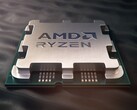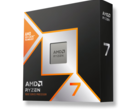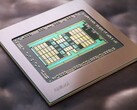Adeia Inc., an intellectual property licensing firm, has filed two patent infringement lawsuits against AMD. The lawsuit is based on claims that the chipmaker has used its patented semiconductor technologies without permission.
The technology licensing company also accused AMD of having “made extensive use” of its innovations for years, in the suits filed in the U.S. District Court for the Western District of Texas. The lawsuit covers ten patents in total, with seven on hybrid bonding and three addressing other advanced semiconductor process technologies.
At the center of this court case is hybrid bonding, the advanced 3D stacking process that AMD uses in its Ryzen X3D processors. AMD uses this technique to vertically layer cache memory directly atop compute dies. The method has played a major role in the company’s gaming success since 2022. It’s what enables chips like the Ryzen 7 5800X3D and Ryzen 9 7950X3D to deliver significantly lower latency and higher frame rates in CPU-bound games.
Now, Adeia claims the Ryzen CPU designer benefited from its IP without licensing it, despite “years of negotiation” between the two firms. The company says it remains open to settlement but is “fully prepared” to pursue the case in court if necessary.
How hybrid bonding powers AMD’s 3D performance
Hybrid bonding, which is the focus of seven of the ten patents in question, is a method of directly connecting silicon layers using metal-to-metal contacts rather than traditional solder bumps. This approach allows for tighter interconnects, lower resistance, and better heat efficiency than older stacking techniques.
In AMD’s 3D V-Cache implementation, hybrid bonding allows the CPU’s L3 cache layer to be stacked directly over the compute die, minimizing data travel distance and dramatically increasing bandwidth. Gamers get smoother frame delivery and improved performance in titles that rely heavily on cache throughput.
What it means for AMD and the PC industry
If Adeia wins the lawsuit, AMD could face royalty payments or licensing fees on every product using 3D-stacked packaging. This outcome could affect its Ryzen X3D and EPYC server CPUs.
While TSMC manufactures AMD’s chips, it is not named in the lawsuit, as it serves solely as a contract manufacturer. AMD, as the design architect and commercial beneficiary, is the primary target of Adeia’s legal action.
Patent disputes are common in the semiconductor industry, but this one arrives at a worse possible time for AMD. The US CPU and GPU manufacturer is preparing its next-generation Zen 5 and Zen 6 architectures. How the case plays out could influence both the pace of AMD’s innovation and the cost structure of future gaming CPUs.















